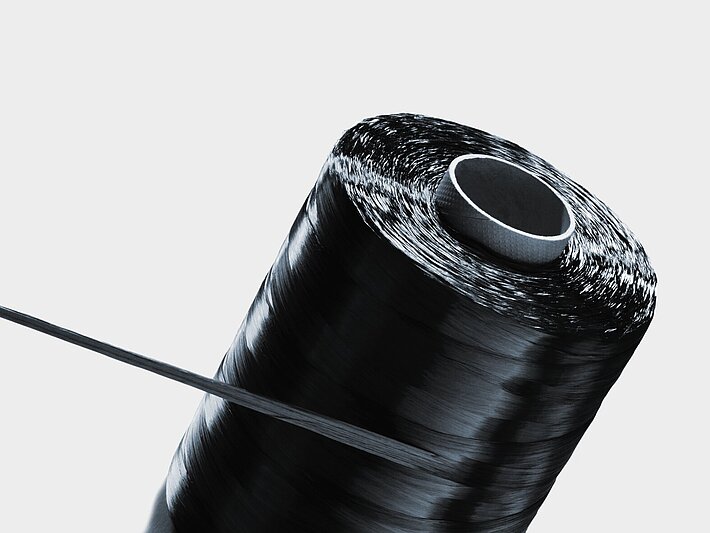Power-opening tailgates: Comfort and safety at the same time
An automatic opening and closing system is the key if you don't have a hand free to open the trunk of your car. Something that was reserved for the premium segment a few years ago is now largely available in the mid-size class too. Many car buyers no longer want to miss out on automatic opening and closing of trunks and, in the even more convenient case, doors.
With constant friction behavior over a wide temperature range, SGL Carbon's SIGRACOMP® carbon friction materials make an important contribution to the functional reliability of automatic liftgate actuators.
Both in the open state and in any intermediate position, they ensure reliable and secure hold. Even in the case of a very abrupt manual operation of the tailgate, in an overload or misuse situation so to speak, the drive unit does not suffer any damage due to the high wear resistance of the friction lining. The user of a drive equipped with our friction linings will also hardly notice the use of friction elements acoustically, as they are very quiet when actuated.
Dr. Florian Reiner, Head of Product Segment for Wet Friction in the Business Unit Composite Solutions of SGL Carbon
Advantages and special features of the carbon friction material
Carbon friction materials are based on technical fabrics embedded in a synthetic resin matrix. This enables the production of fine friction layers of different geometry and properties, tailored to the given requirements of the respective customer application and in monitored quality.
The performance of a friction system results from the interaction between the friction elements and the lubricant used, e.g. an oil or grease. For example, the topography of the friction material is essential for lubricant management, as it must have a high contact ratio, i.e. the material components in direct contact with the mating friction surface, on the one hand, and a good oil absorption capacity on the other.
By specifically adjusting the fabric structure and combining it with adapted resin systems, our friction materials offer excellent operating properties in a wide range of wet friction applications. They are characterized by:
- Consistently high friction values
- Good oil compatibility
- Very good compression stability
- Thermal stability
- Wear resistance
This sets them apart from other solutions such as papers or metallic linings.

Development in close cooperation

In close cooperation, the proper friction pairing was also found for highly stressed POWERISE® liftgate and door drives of our customer Stabilus. The development of the friction components took place hand in hand between the project partners from the first prototype to the start of series production. A variety of combinations of substrates, friction layers and lubricants were put to the test. Through targeted iteration loops, all functionally relevant requirements for the friction system were met.
Dr. Florian Reiner: "Thanks to the trusting cooperation with our customer Stabilus, we were able to develop and industrialize a customized solution for the end use application. We managed the step from friction material supplier to component manufacturer quickly and efficiently. This was only possible thanks to the fact that we had already been working very intensively on topics such as bonding and lubricants in previous years. Direct access to all core technologies within SGL Carbon is a significant added value for our customers in the automotive industry."
The use of carbon friction material has proven to be an effective development progress, making our POWERISE products even more long-lasting and robust. Stabilus' electromechanical systems have enjoyed steadily growing popularity among OEMs and end customers in all major automotive markets for many years. Due to the reliability and safety of our liftgate actuators, consumers enjoy our innovative products for a long time, which improve the comfort of their vehicles.
David Burbulla, Team Leader Development POWERISE at Stabilus
It's the combination that makes the difference
Spindle drives installed in liftgates rely on different technical concepts. In many cases, a combination of an electric motor, a spindle and several friction components is responsible for the function. The friction pairing is based on the rotor-stator principle, as is often used in clutch applications: A rotating part is running against a stationary part and generates friction. A minimum coefficient of friction is required to hold the connected liftgate securely in position at all times throughout the life of the vehicle. In contrast, friction values that are too high can impair the function of the component.
We expect further growth in the market for automated opening and closing systems over the next few years. Buyers of new cars appreciate such convenience functions and do not want to miss them anymore. The current trend toward electromobility and autonomous driving will further strengthen this development.
Werner Franz, Head of Sales Wet Friction in the Large Scale Solutions of SGL Carbon's BU CS
Friction components from our portfolio can ensure high performance throughout the vehicle's life. Since 2018, several million carbon friction components have already been produced and installed.
Further applications
The applications of carbon wet friction materials, which have been established for more than 10 years, are mostly found in automotive powertrains - from synchronizer rings and limited slip differentials to torque converter lock-up clutches, wet brakes and wet clutches. Several millions of transmissions in cars and trucks per year do already make use of SGL’s advanced material solutions today.




